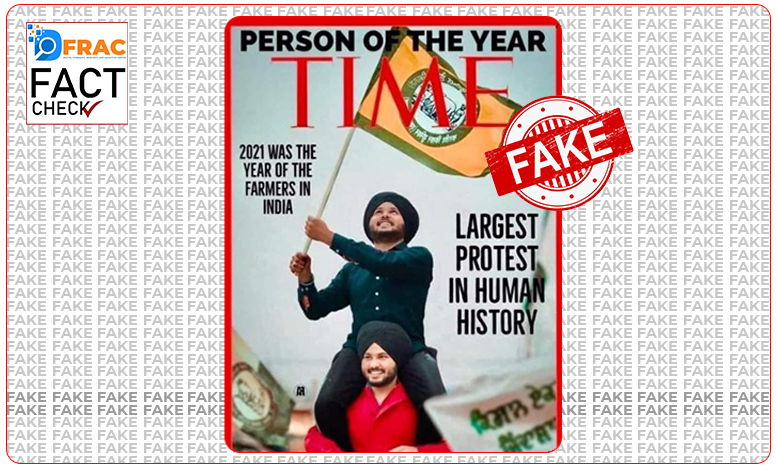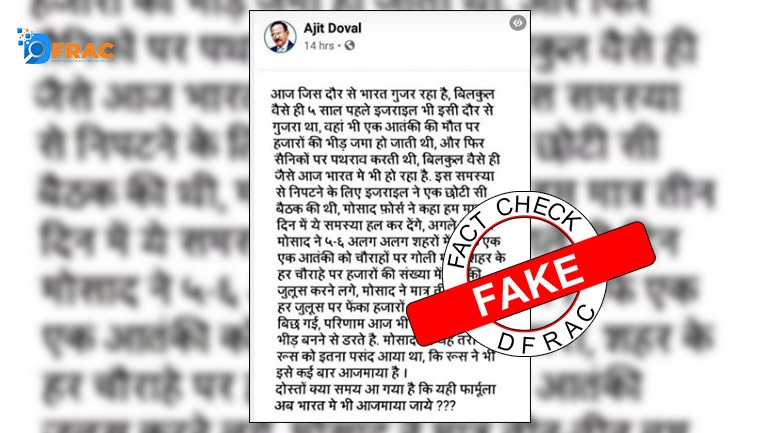On April 22, a tragic terrorist attack in Pahalgam, Jammu & Kashmir, claimed the lives of 27 innocent tourists. The attack was directly attributed to Pakistani-based terrorists. In response, on the night of May 6–7, India launched targeted strikes on multiple terrorist hideouts located in Pakistan. What followed was a period of escalated conflict between India and Pakistan, with both nations engaging in missile and drone strikes that targeted military installations, including army base camps and airbases.
However, this conflict extended beyond physical borders into the digital realm, giving rise to an intense “information war.” Alongside conventional warfare, a parallel battle of narratives played out across social media and international news platforms. This information war was marked by the widespread dissemination of misinformation, disinformation, and propaganda, often without verification of facts. The role of certain media outlets and journalists from Pakistan and Turkey in this regard has been particularly concerning.
This report aims to analyze and document the false and misleading narratives propagated by Pakistani and Turkish media during the conflict. It seeks to explore how media entities, generally considered as pillars of transparency and information, can turn into tools of propaganda under volatile geopolitical circumstances.
Key Focus Areas of the Report:
- The Nexus Between Pakistani and Turkish Media Outlets
- RTE Urdu: Alleged Media Front Operated by Pakistani Individuals
- Fake Media Entity Posing as a Finnish News Agency
- Exploitation of Twitter Communities for Propaganda
- Fact-Checking the Misinformation Campaign
1. Pakistani-Turkish Media Nexus:
Amidst heightened tensions following the Pahalgam attack, coordinated disinformation campaigns were observed from Pakistani and Turkish media. Several misleading and fake news reports were circulated that aligned closely in content and timing, suggesting a strategic nexus between media outlets and social media users from both countries.
False narratives, especially regarding Turkish military support for Pakistan, gained traction. During the period of missile and drone exchanges, both countries’ media outlets—including Pakistan’s ARY News, SNN News, and BOL Network, as well as Turkey’s Misk Media, RTE Urdu, Clash Report, and Conflict—were found to be major sources of misinformation. These outlets shared or echoed each other’s misleading content, fueling further confusion and bias.
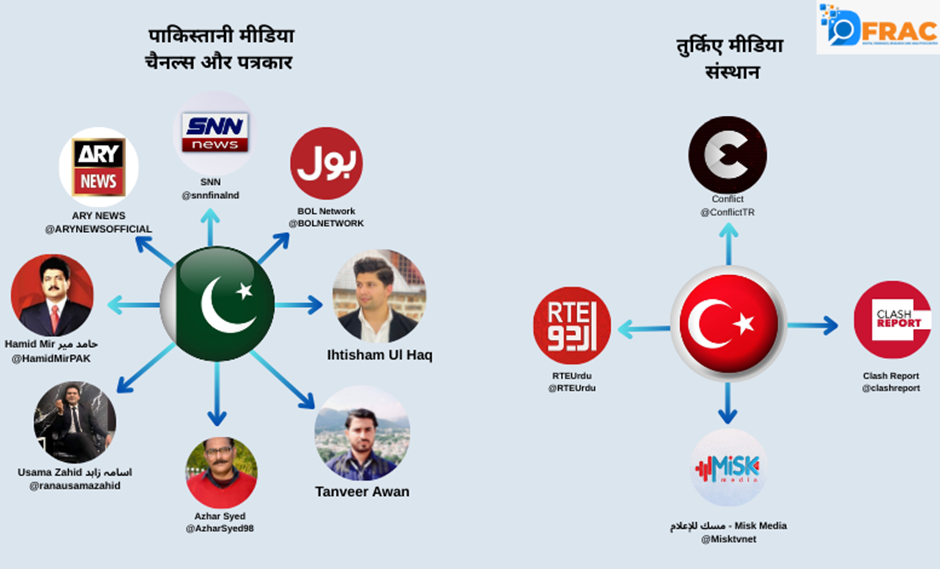
2. Tarnishing the Image of the Indian Armed Forces:
Several Pakistani media platforms, including ARY News and BOL Network, circulated unverified and fabricated reports targeting the Indian military. A notable false claim asserted that Lt. Gen. D.S. Rana, Director General of India’s Defence Intelligence Agency, was court-martialed and exiled to the Andaman and Nicobar Islands over alleged corruption.
Fact-checking by DFRAC revealed that this claim was entirely baseless. In reality, Lt. Gen. D.S. Rana had been promoted to the prestigious position of Commander-in-Chief of the tri-services command at the Andaman and Nicobar Command (#CINCAN).
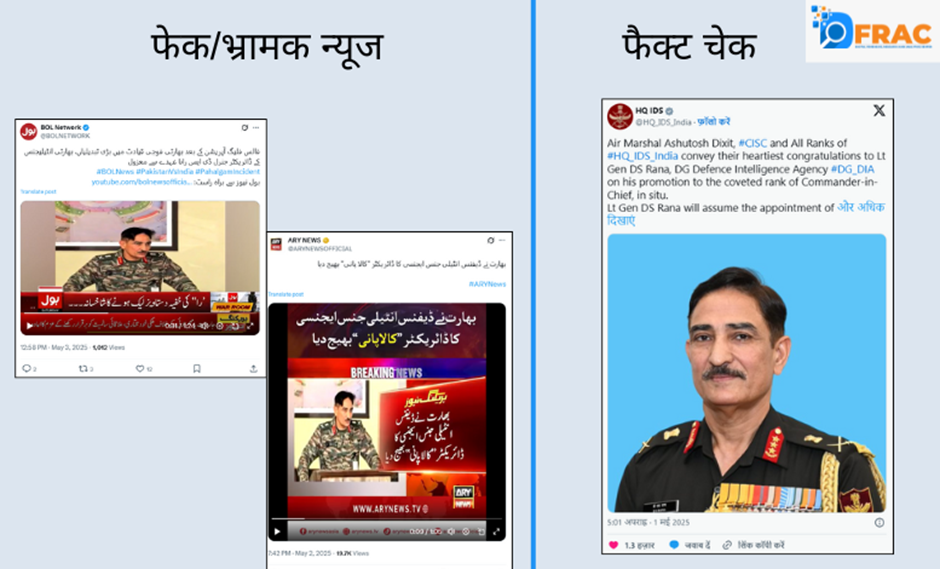
3. Fake and Misleading News from Turkish Outlets:
Platforms like Misk Media, RTE Urdu, Clash Report, and Conflict claim to be independent media institutions. However, investigations raised serious doubts about their authenticity and editorial integrity, particularly in the case of RTE Urdu.
Example 4: RTE Urdu published old or unrelated videos, including a clip from Myanmar, falsely claimed to show the destruction of India’s Pokhran outpost. It also falsely claimed that Indian soldiers had surrendered by waving white flags at the border.
Example 1: Misk Media circulated a video claiming Turkey had deployed its warship Anadolu-400 to Pakistan. DFRAC’s investigation revealed that the video was two years old and unrelated to current events.
Example 2: Conflict posted a video claiming Pakistan celebrated a victory in Azerbaijan after a ceasefire with India. This footage dates back to 2020.
Example 3: Clash Report falsely claimed, citing Geo News, that 70% of India’s power grid was shut down due to Pakistani cyberattacks. This was debunked by PIB Fact Check.
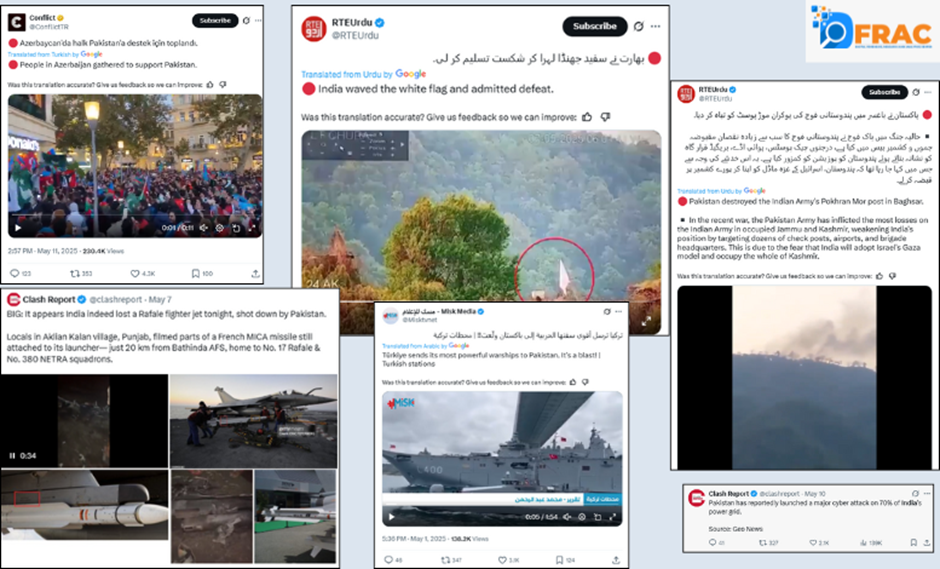
4. RTE Urdu: A Pakistani Operation Masquerading as Turkish Media
RTE Urdu presents itself as a Turkish media outlet. However, the investigation suggests it is a Pakistani-run front.
- The name “RTE” appears to be an acronym for Recep Tayyip Erdoğan, the President of Turkey.
- RTE Urdu’s Facebook page, originally titled “Rajab Tayyab Erdoğan” in 2016, was renamed multiple times before settling on “RTE Urdu” in 2021 to appear as a legitimate media outlet.
- The page is managed by five individuals from Turkey, Australia, and Hong Kong. Notably, a Turkish phone number linked to the page was traced to a Pakistani national named Yahya Salah.

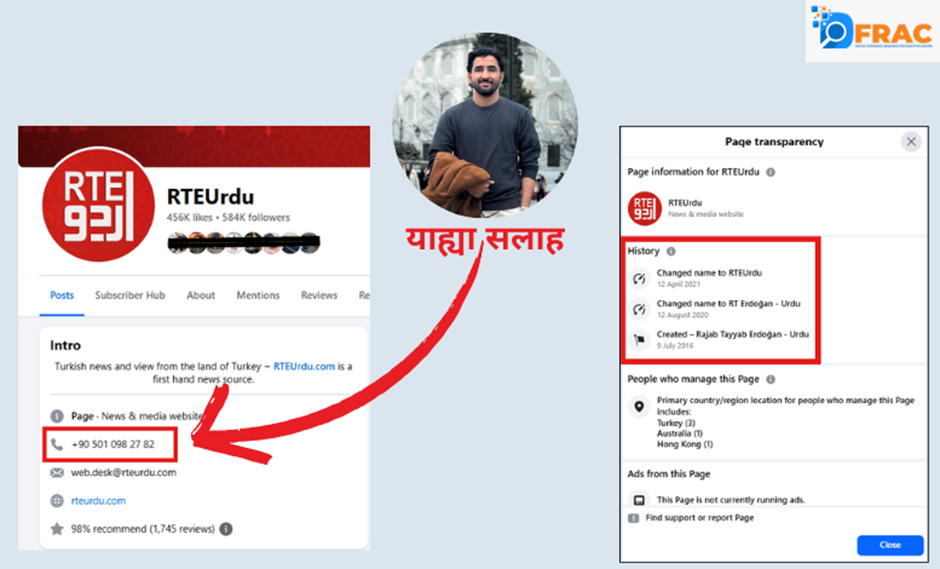
Who is Yahya Salah?
Yahya Salah is a Pakistani native of Dera Ghazi Khan, currently residing in Kayseri, Turkey. His social media profiles confirm his educational background in Pakistan and ongoing residence in Turkey.

5. SNN News: A Fake Finnish Media Entity
SNN News, short for Scandinavian News Network, claims to be an international news agency based in Finland. However, DFRAC’s investigation reveals that it operates from Pakistan.
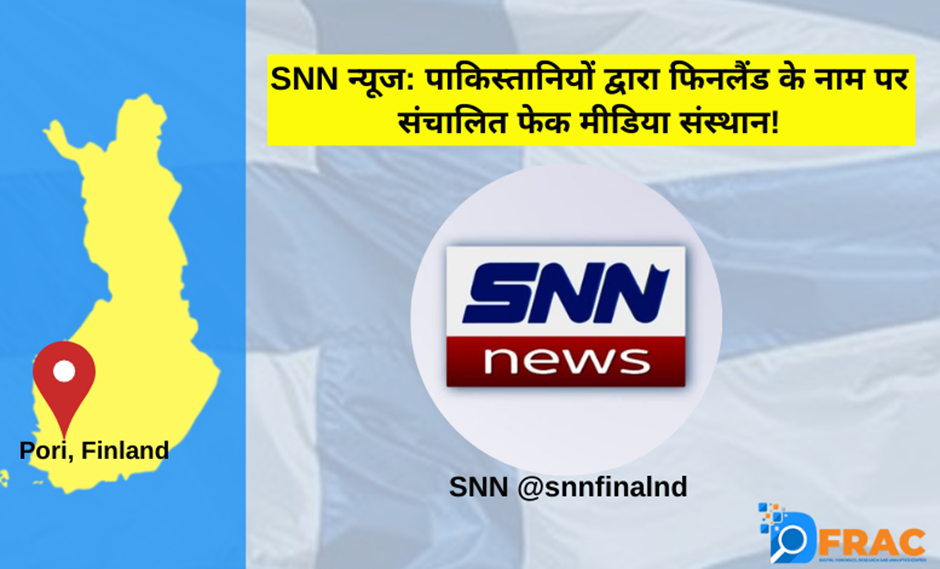

- The Facebook page lists Islamabad, Pakistan, as its location and features a Pakistani phone number linked to Usama Zahid.
- Historical data shows the page was initially named after Zahid and later rebranded as SNN News.
- Zahid is an “award-winning journalist” and has previously worked with Pakistani media outlets like Aaj TV.
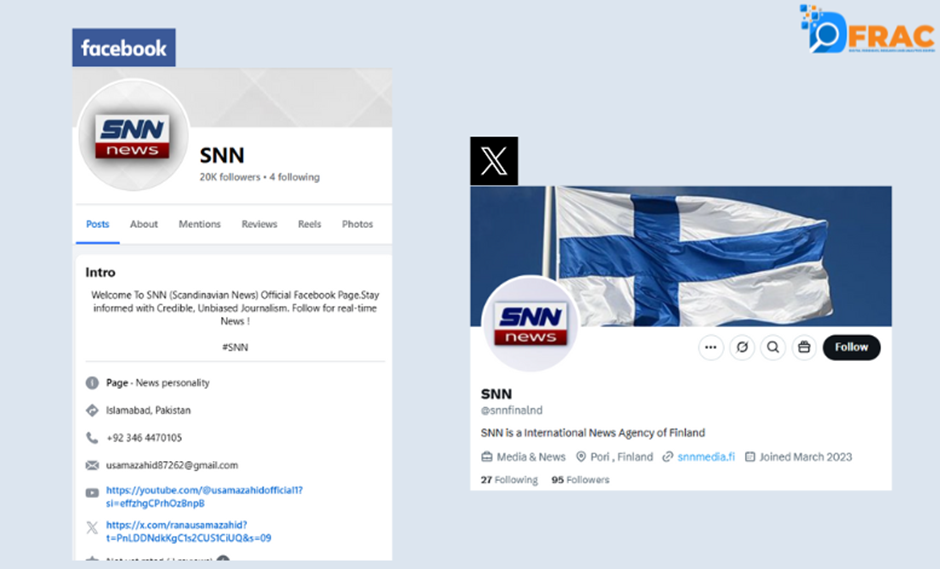

Verification from Finnish Sources:
DFRAC searched official listings and databases for Finnish media organizations and found no mention of SNN News. Reports by credible sources like BBC and Jagran Josh confirm that SNN News is not recognized as a legitimate media agency in Finland.
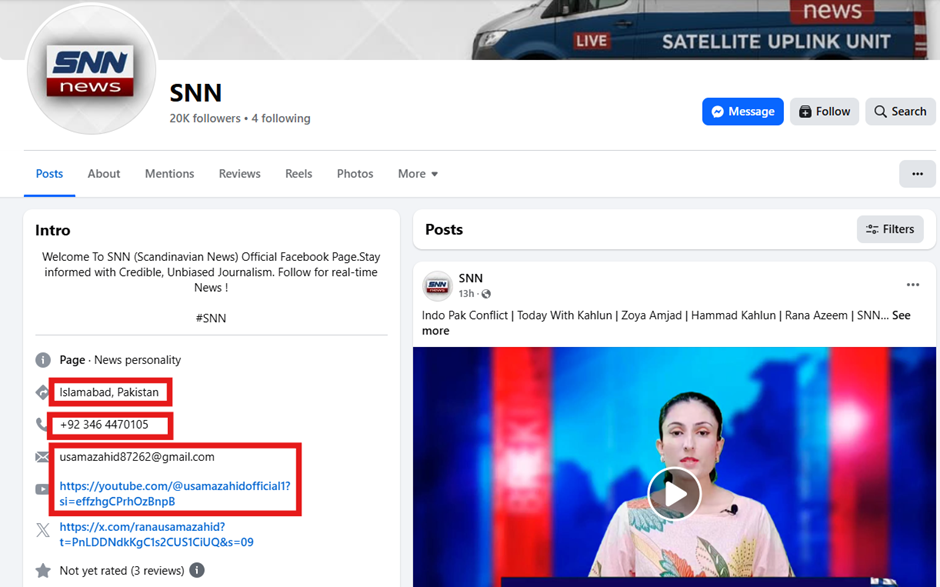

6. Twitter Communities Exploited for Disinformation
Twitter’s community feature was weaponized by Pakistani journalists to spread false narratives. Journalists Ehtisham ul Haq and Tanveer Awan were found to be administrators of multiple such communities:
- Tanveer Awan runs three communities: Pakistan News Updates (2,800 members), Pakistan Updates (7,000 members), and Pakistan (600 members).
- Ehtisham ul Haq runs the largest community, Pakistan, with approximately 16,700 members.

These communities heavily circulated fake news on May 7–8, including:
- Claims of downed Indian Rafale jets
- Destruction of Indian airbases
- Capture of Indian pilot Shivani Singh
- Indian troops waving white flags to retrieve bodies

7. DFRAC’s Fact-Checking Analysis:
- False Claim 1: Journalist Hamid Mir claimed Pakistan had shot down Indian fighter jets in Akhnoor and Bathinda. The image he posted was from a 2021 MiG-21 crash in Moga, Punjab.
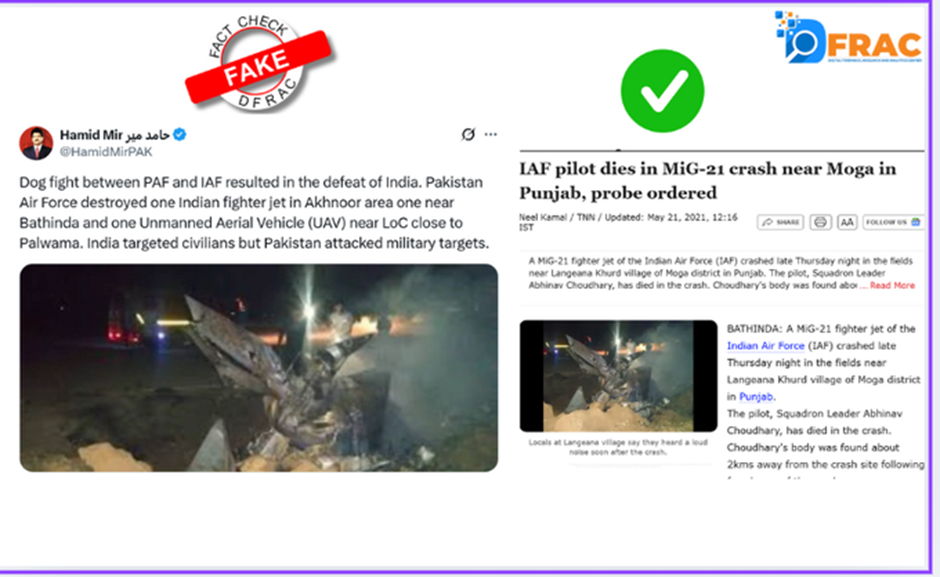
- False Claim 2: ARY News also used an image from the 2021 Moga crash to support similar claims.
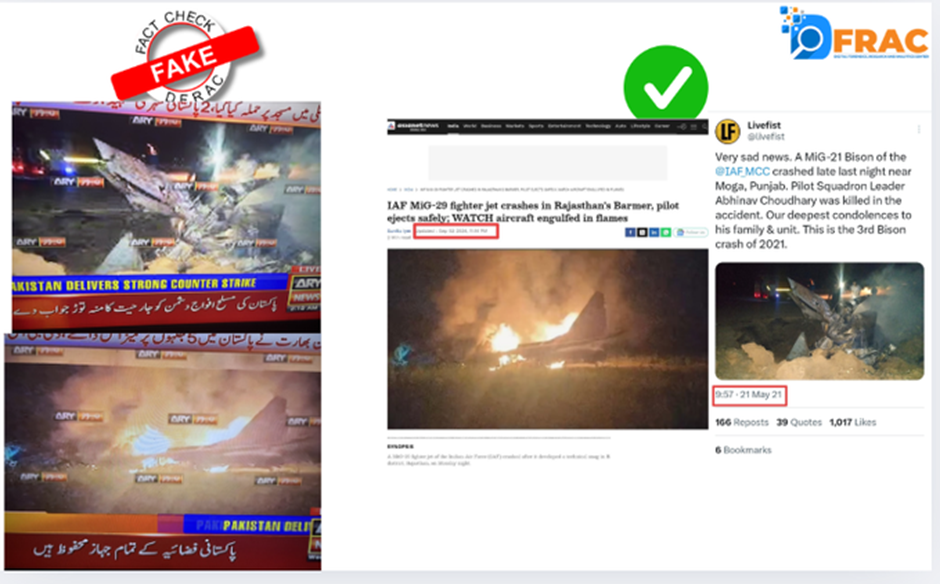
- False Claim 3: RTE Urdu shared a video claiming the destruction of India’s Pokhran outpost. The footage was traced to Myanmar’s “Voice of Myanmar” Facebook page, dated March 7, 2024.

- False Claim 4: SNN News and Usama Zahid shared a video of alleged shelling in Leepa Valley, which was found to have been uploaded on YouTube on April 2, before the actual India-Pakistan tensions began.

- False Claim 5: A viral tweet falsely claimed that North Korean leader Kim Jong-un blamed India for the conflict. DFRAC found no credible sources or reports supporting this claim.

Conclusion:
The recent conflict between India and Pakistan revealed how the modern battlefield is not just physical, but digital. The spread of misinformation by Pakistani and Turkish media outlets played a key role in shaping public perception and manipulating global narratives.
The deliberate use of old, unrelated, or fabricated content aimed to provoke public sentiment, mislead international observers, and damage the Indian military’s reputation. In many instances, coordinated campaigns between Pakistani and Turkish sources amplified these falsehoods.
Such actions not only undermine journalistic integrity but also pose significant threats to regional peace and security. It is now evident that in today’s world, information has become a weapon, capable of influencing diplomacy, politics, and war itself.



